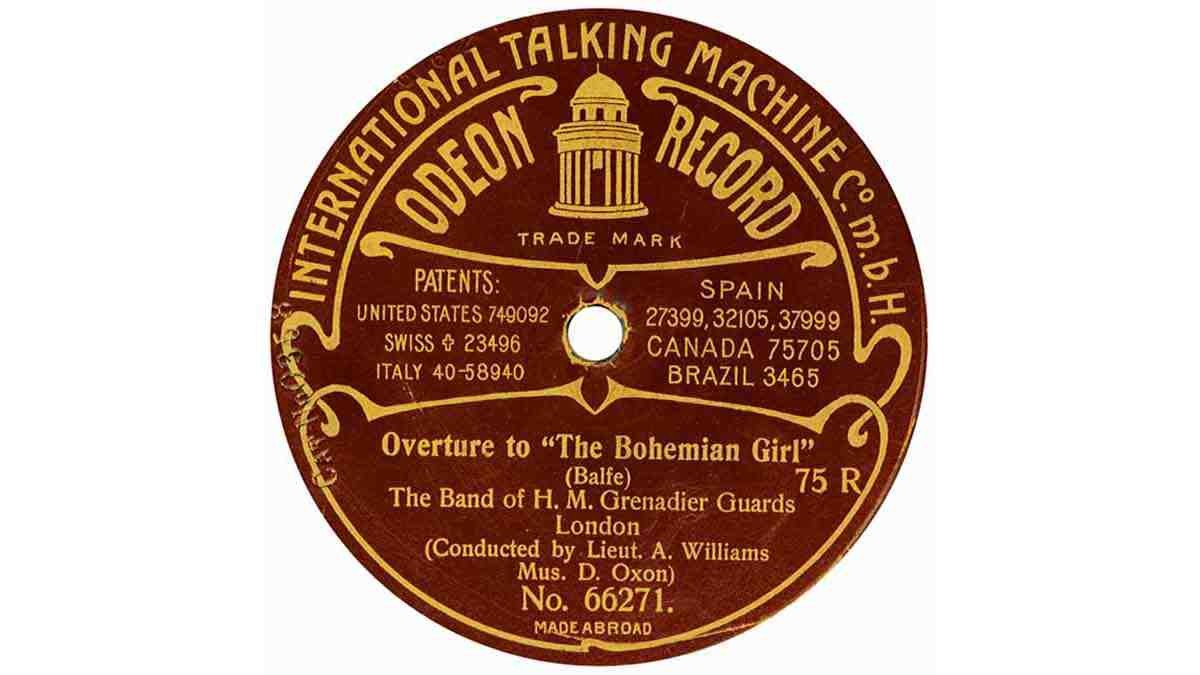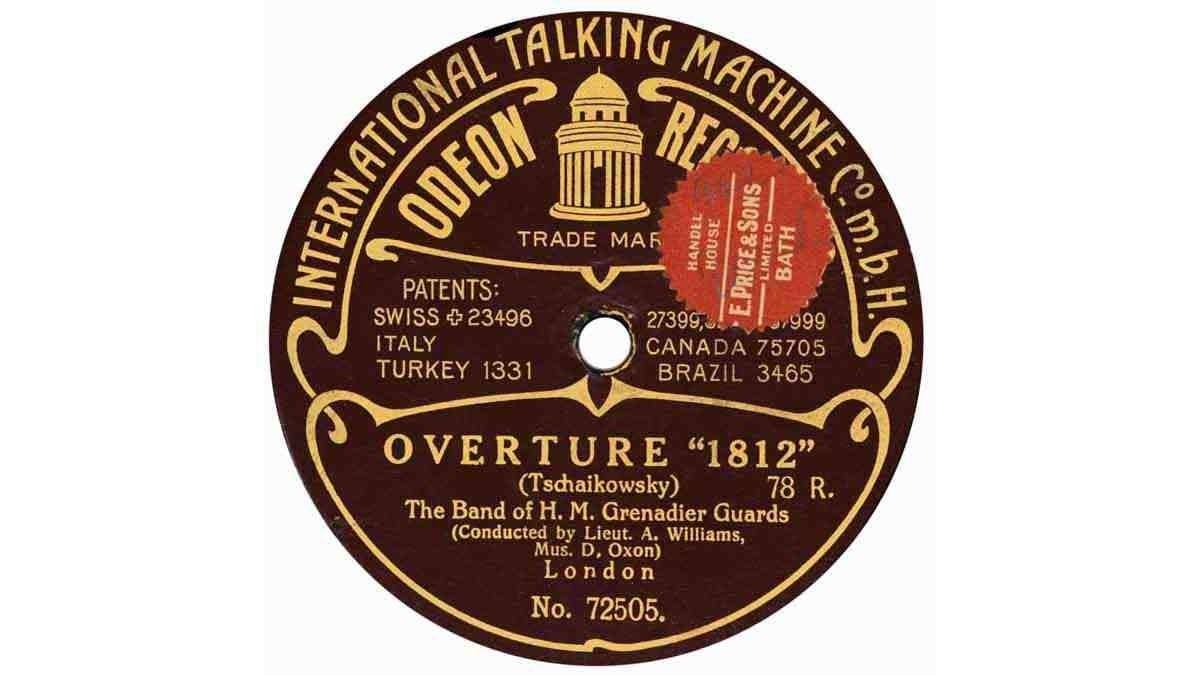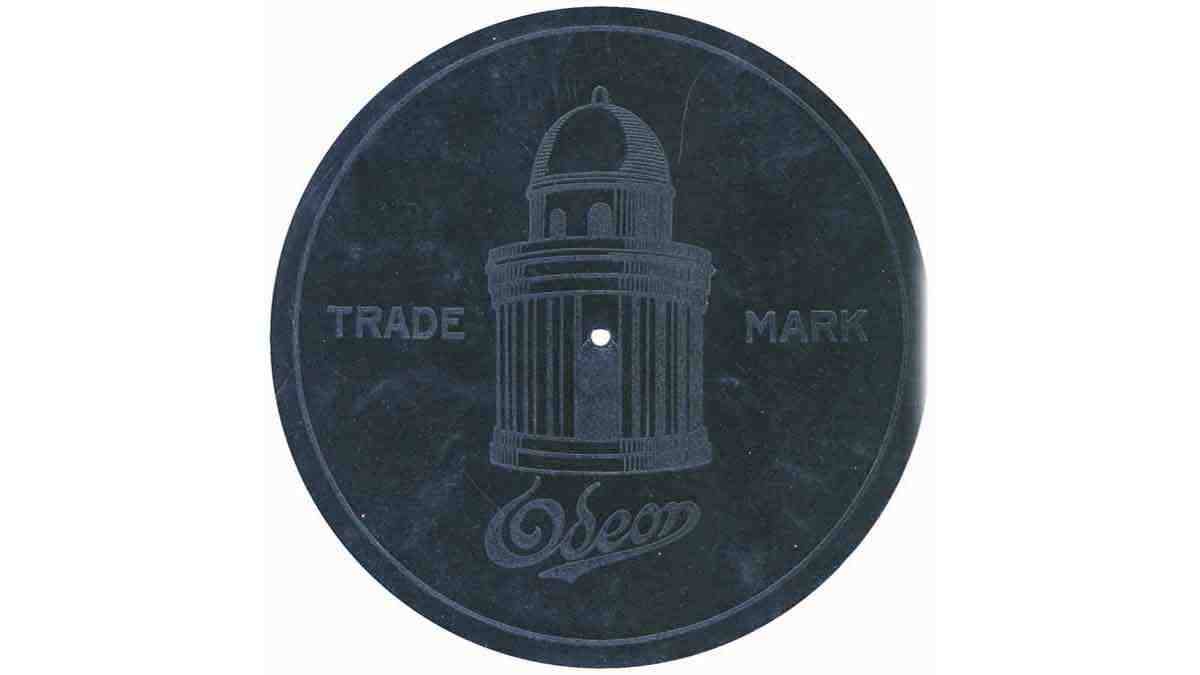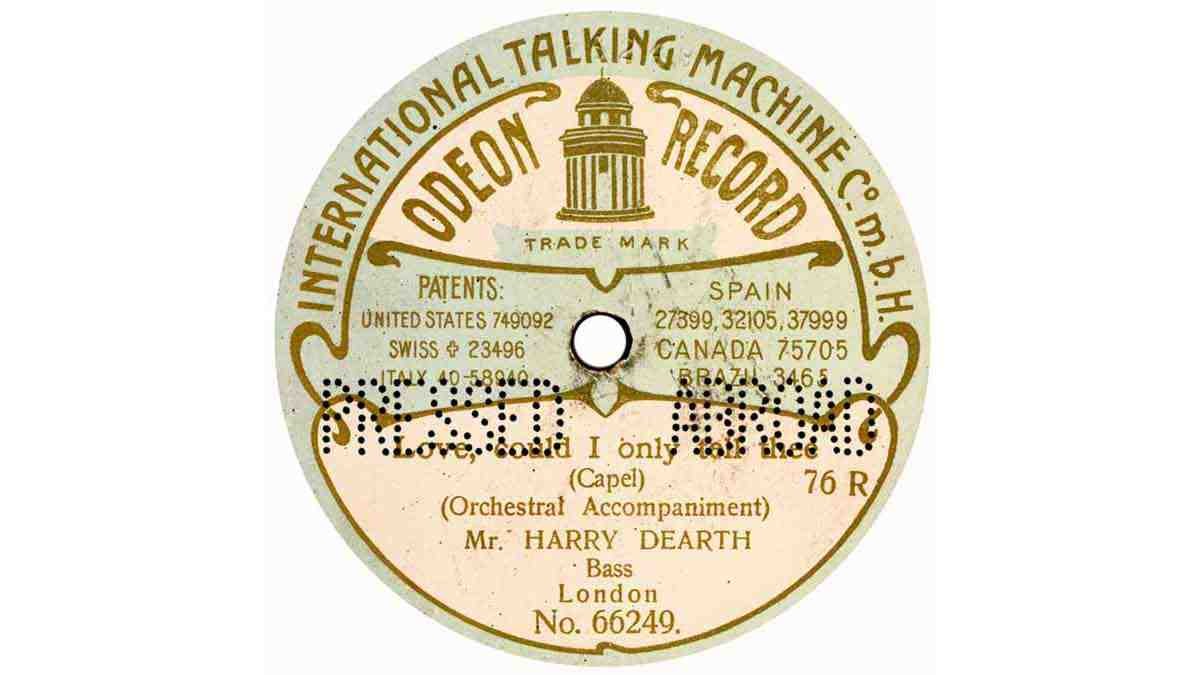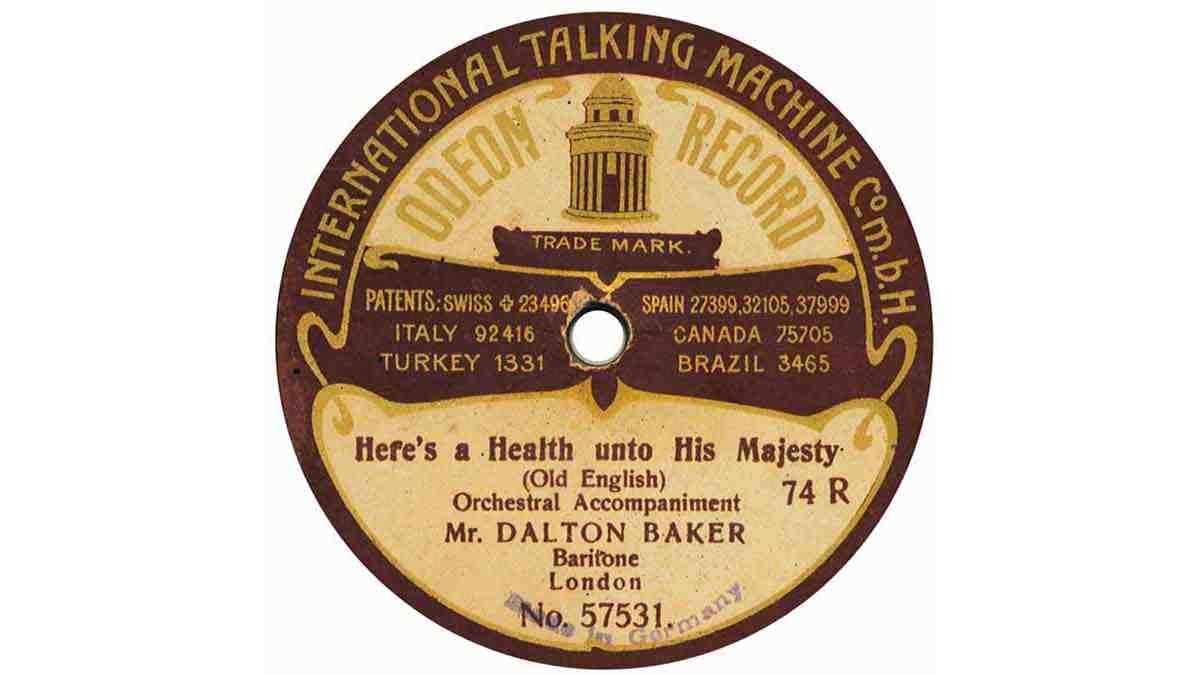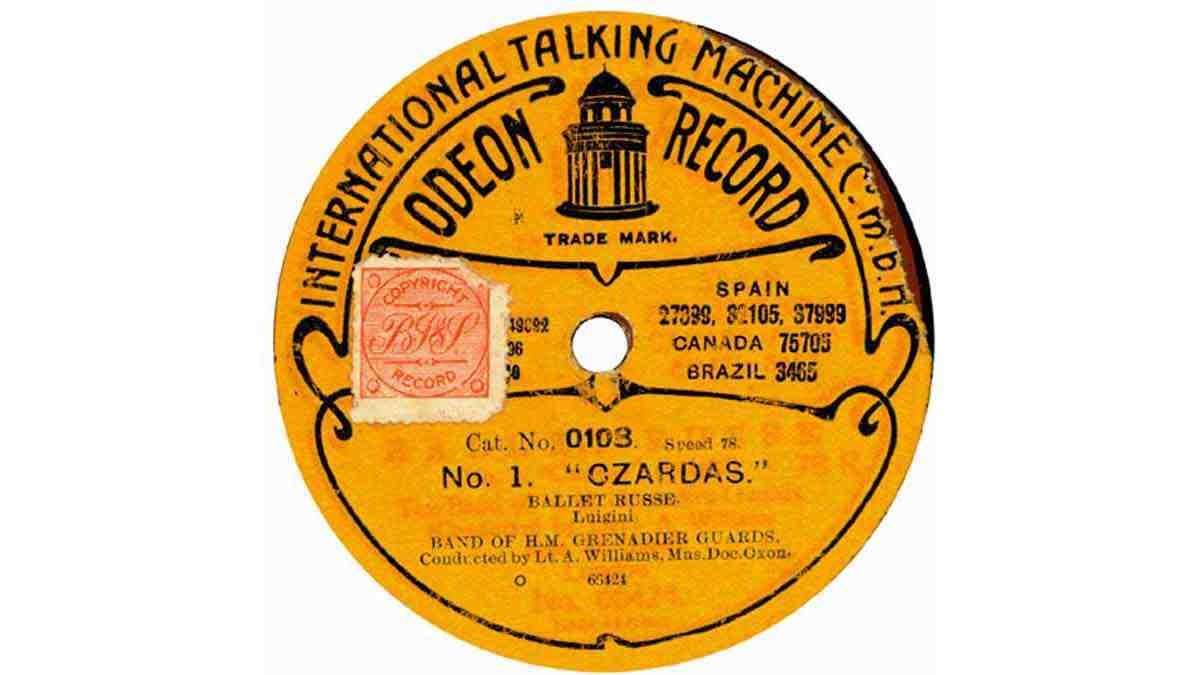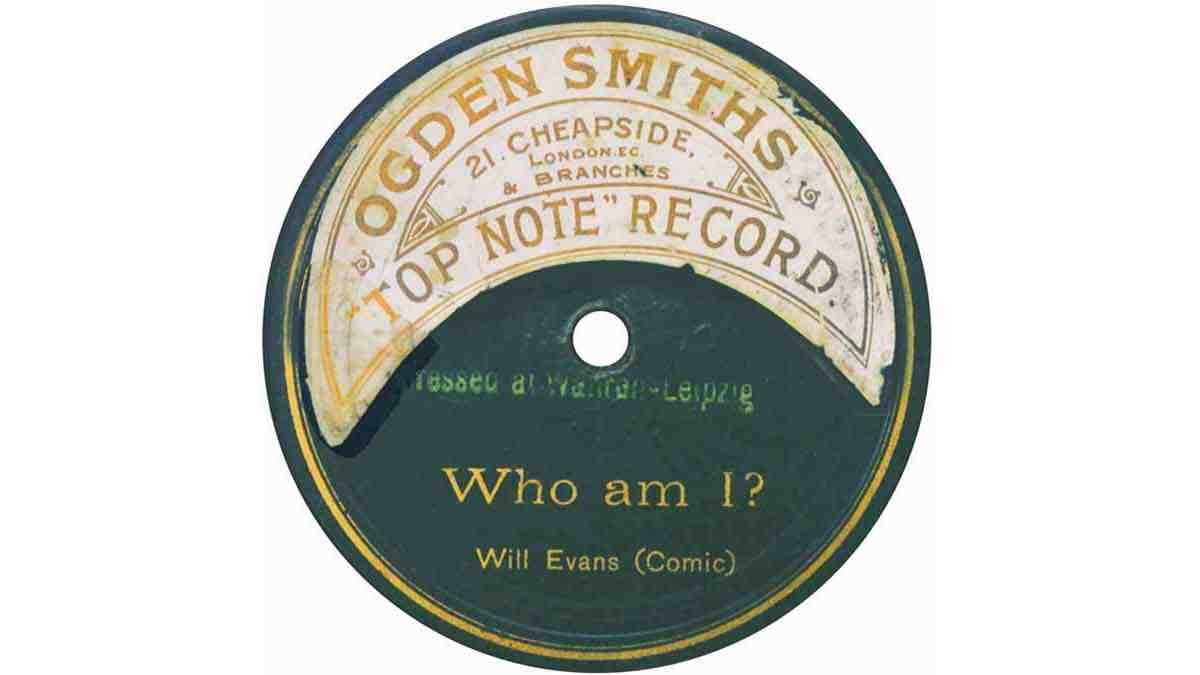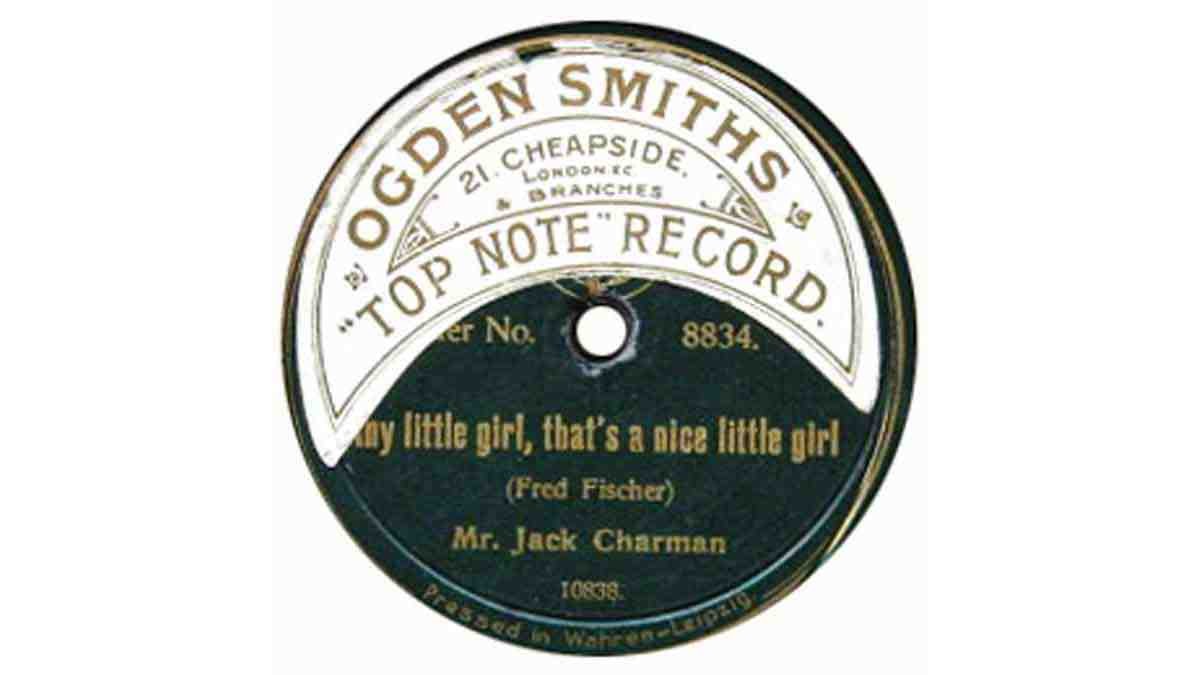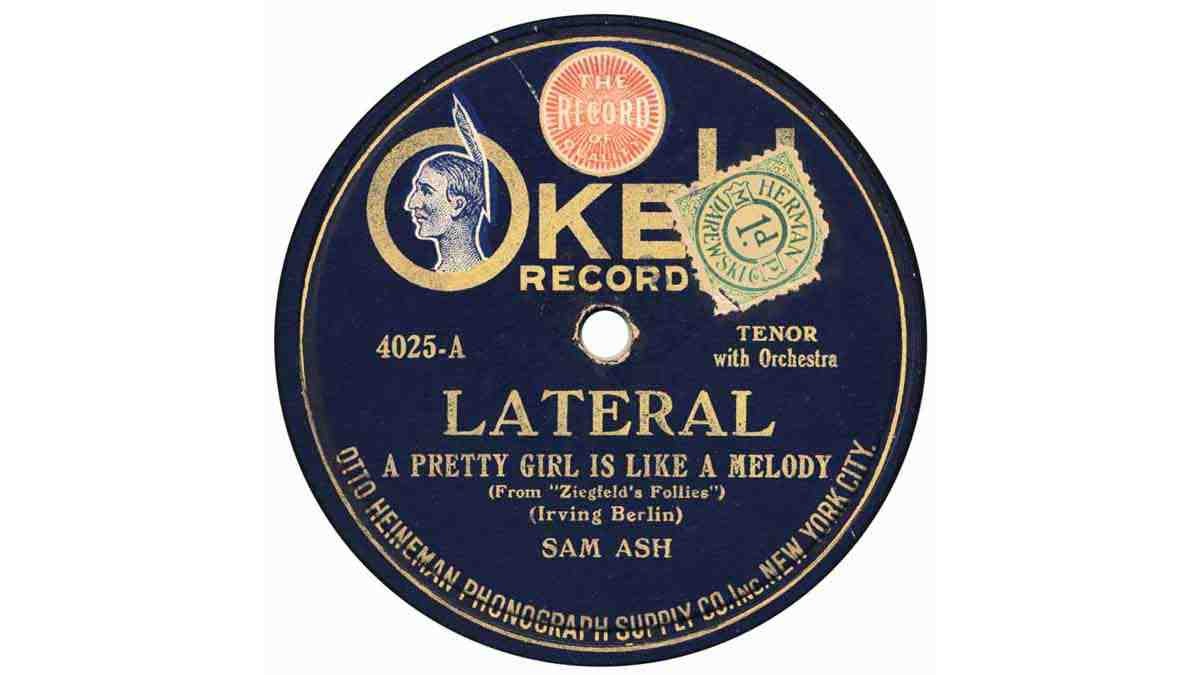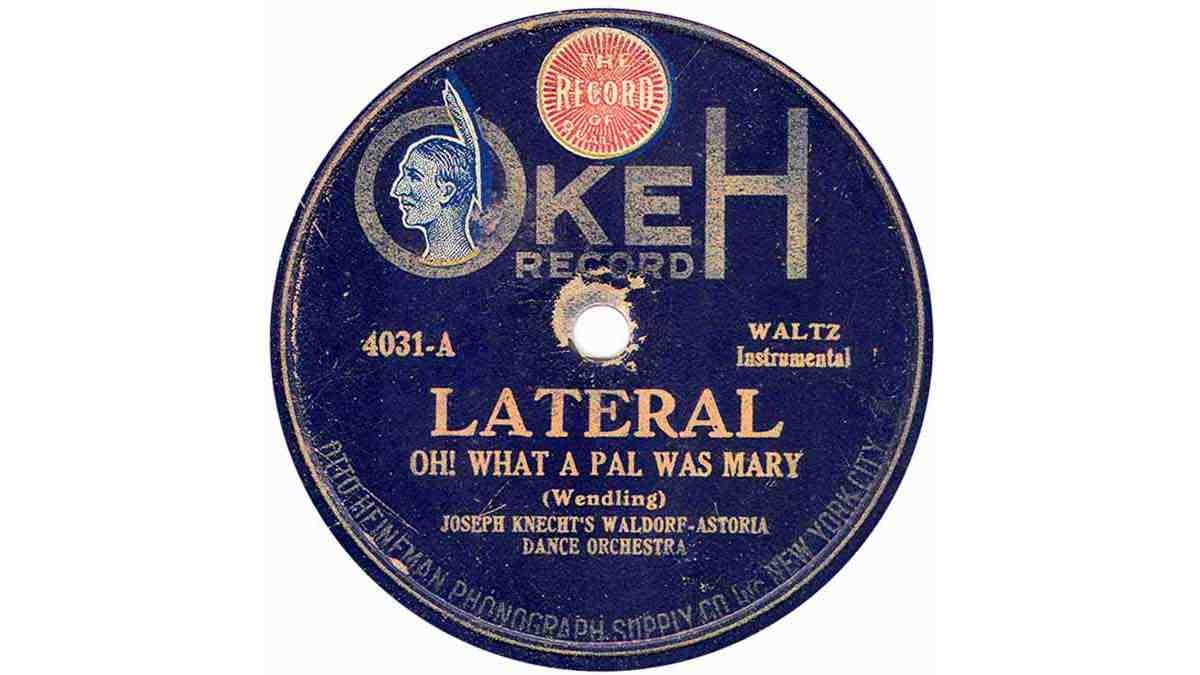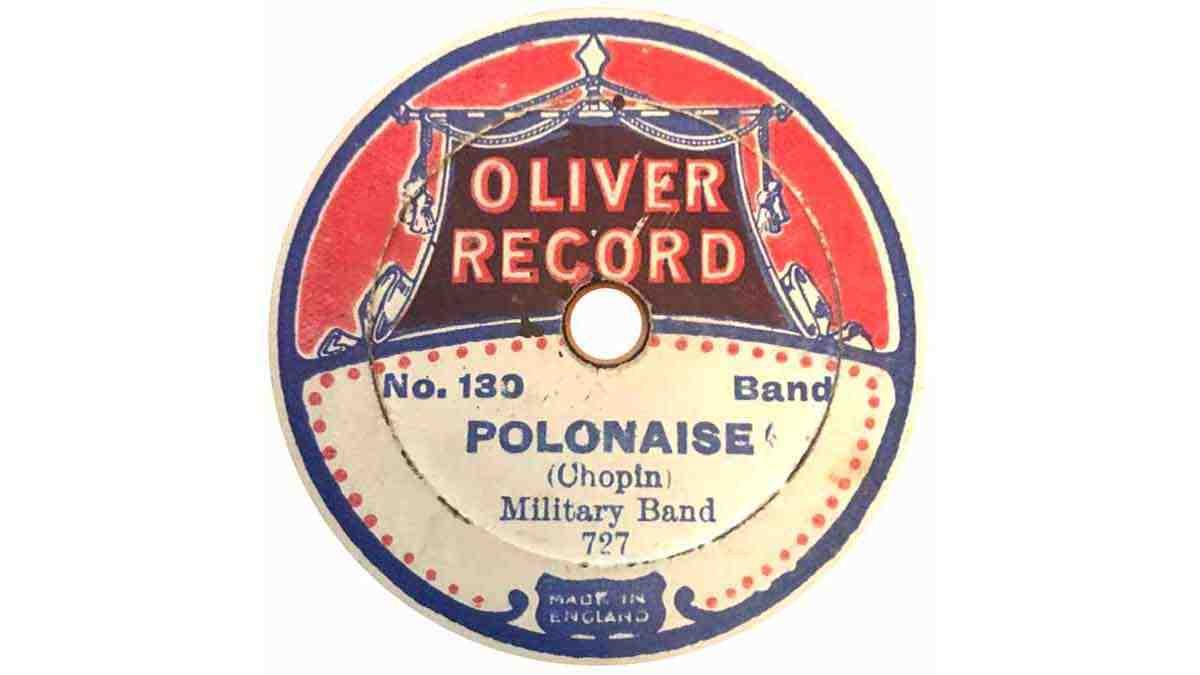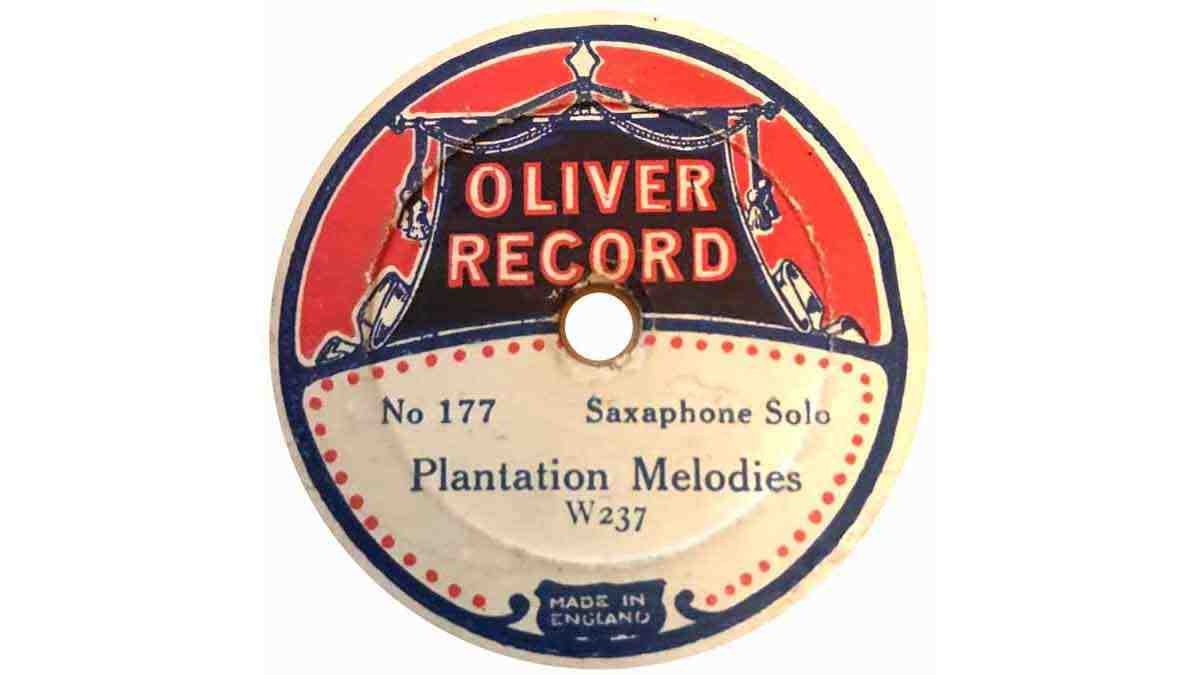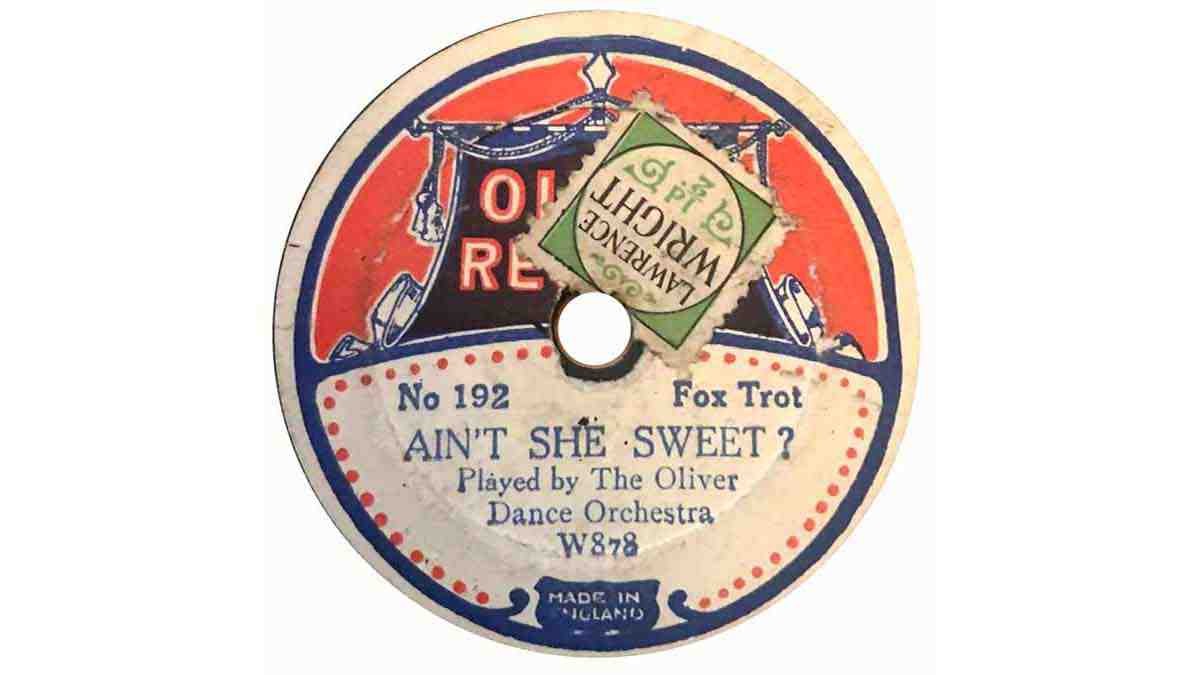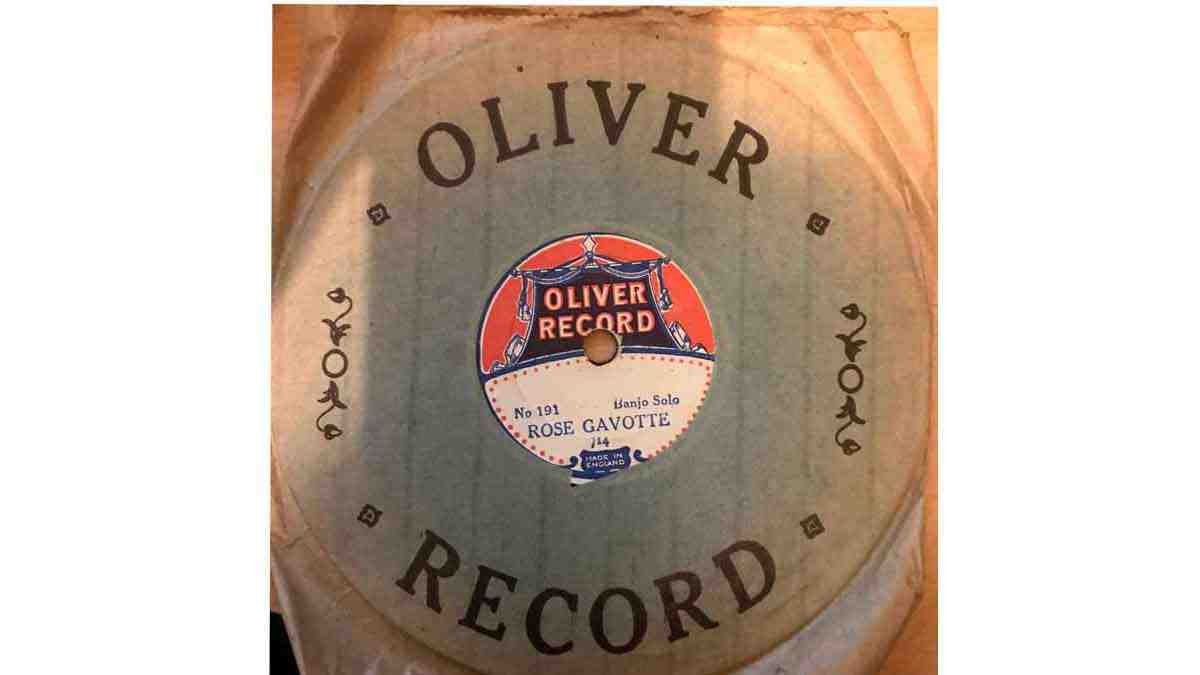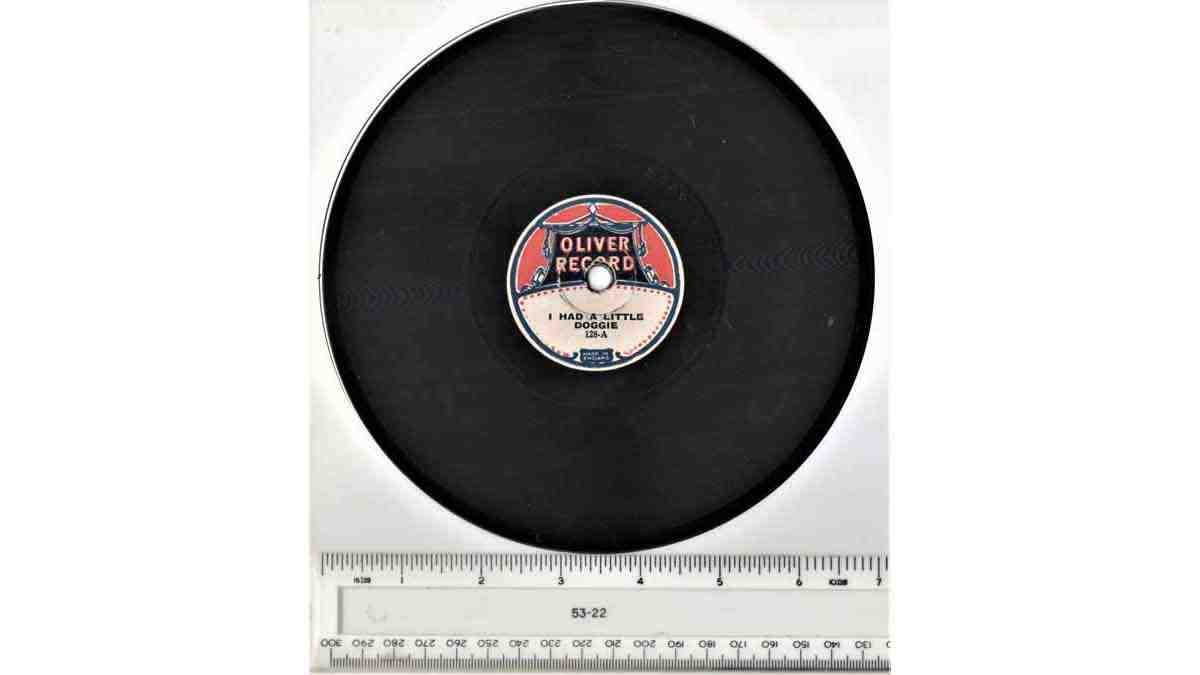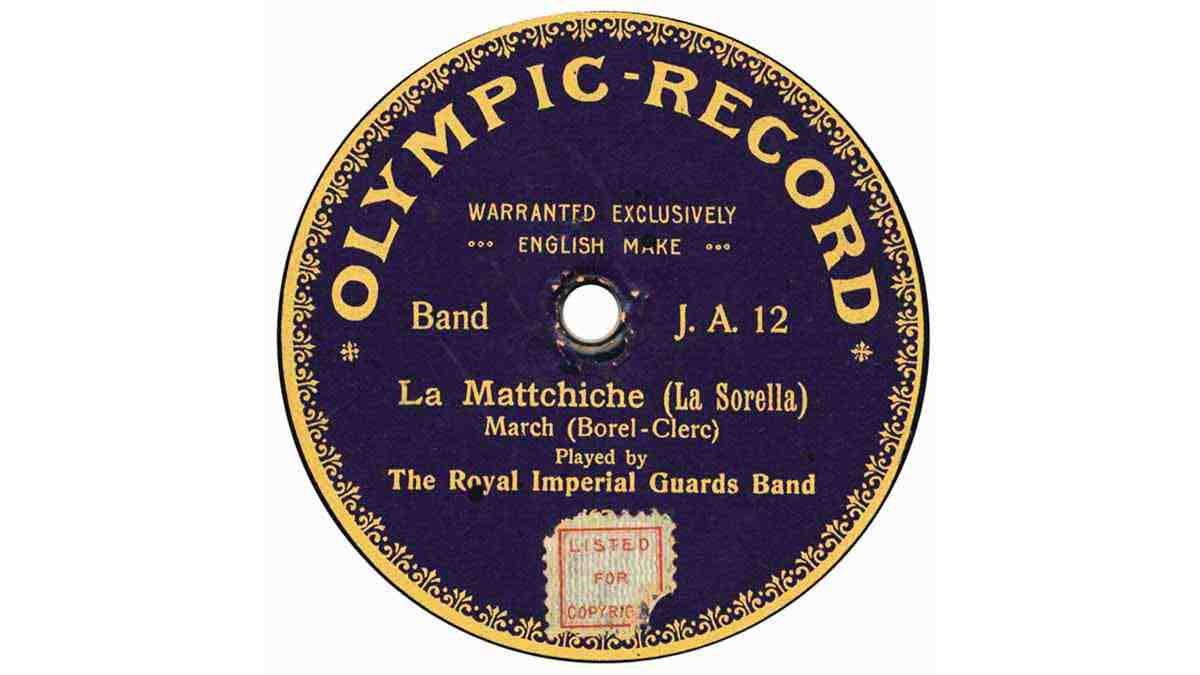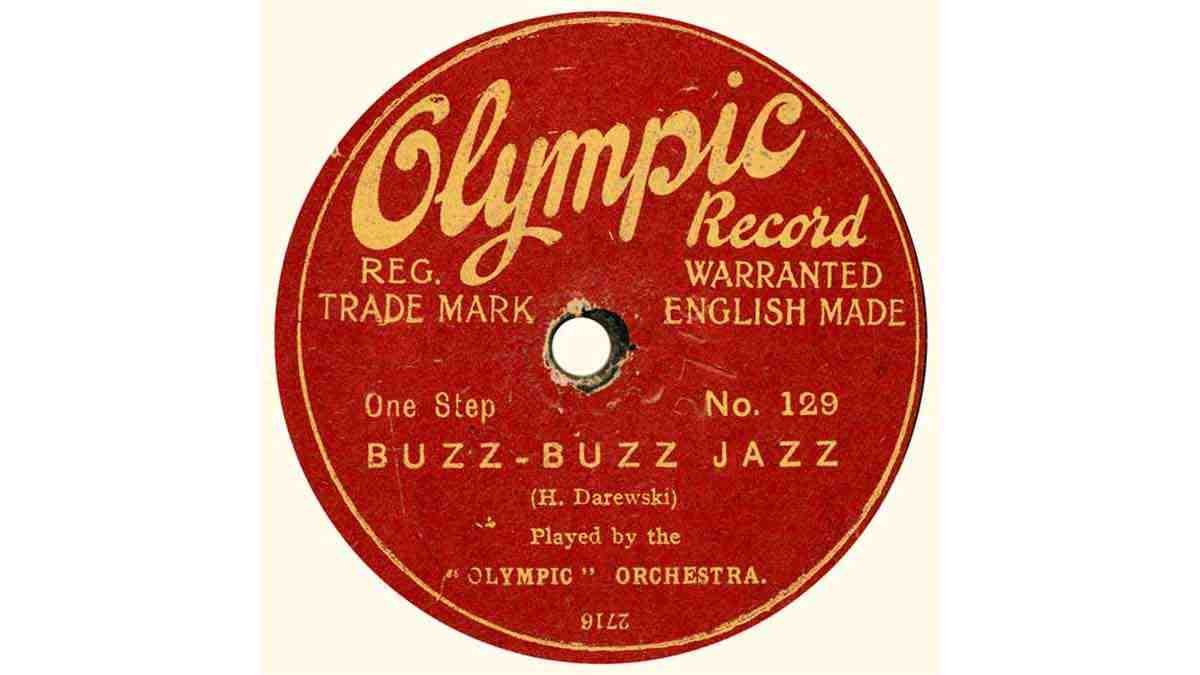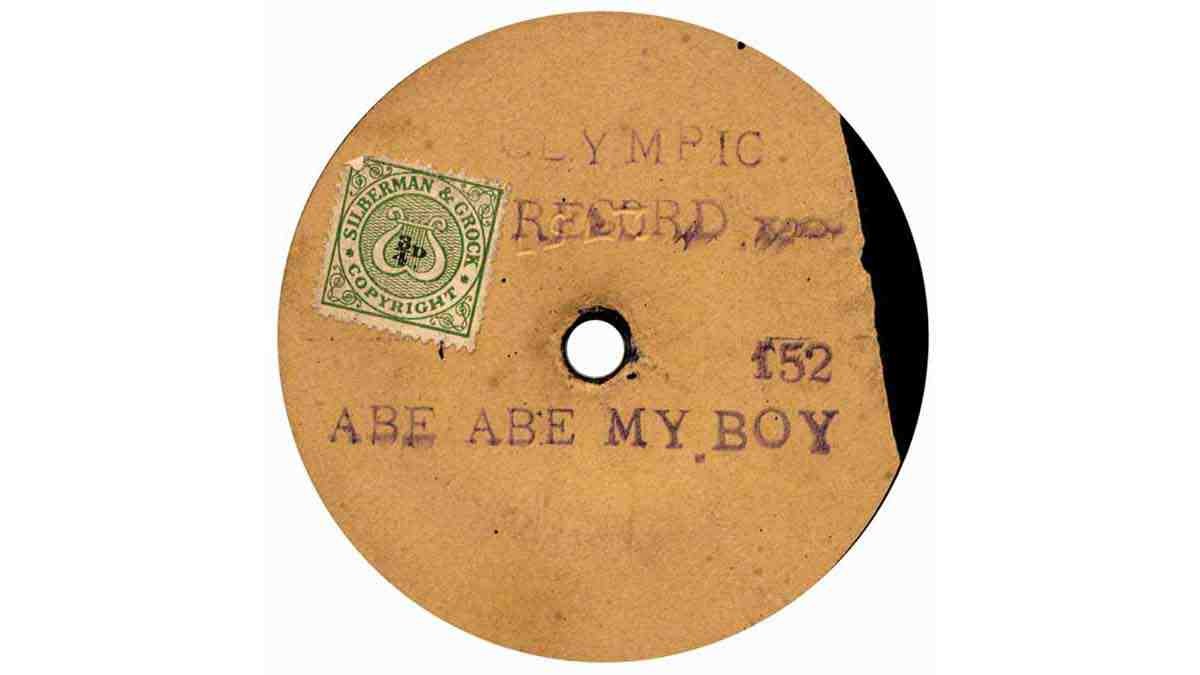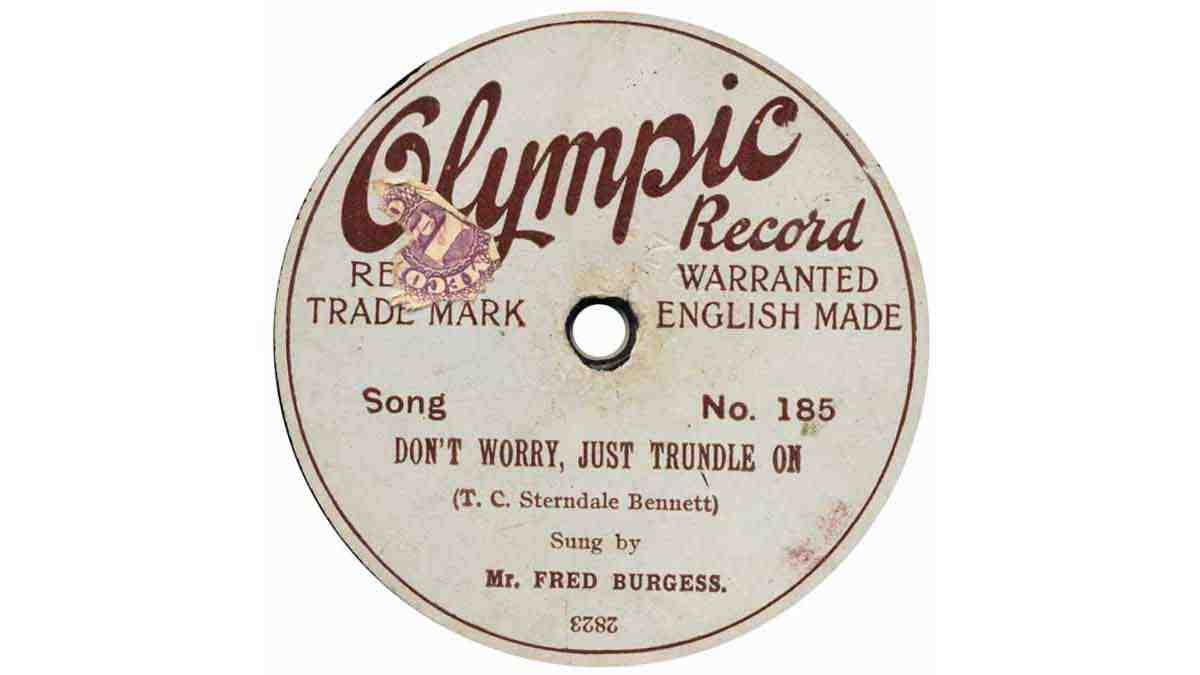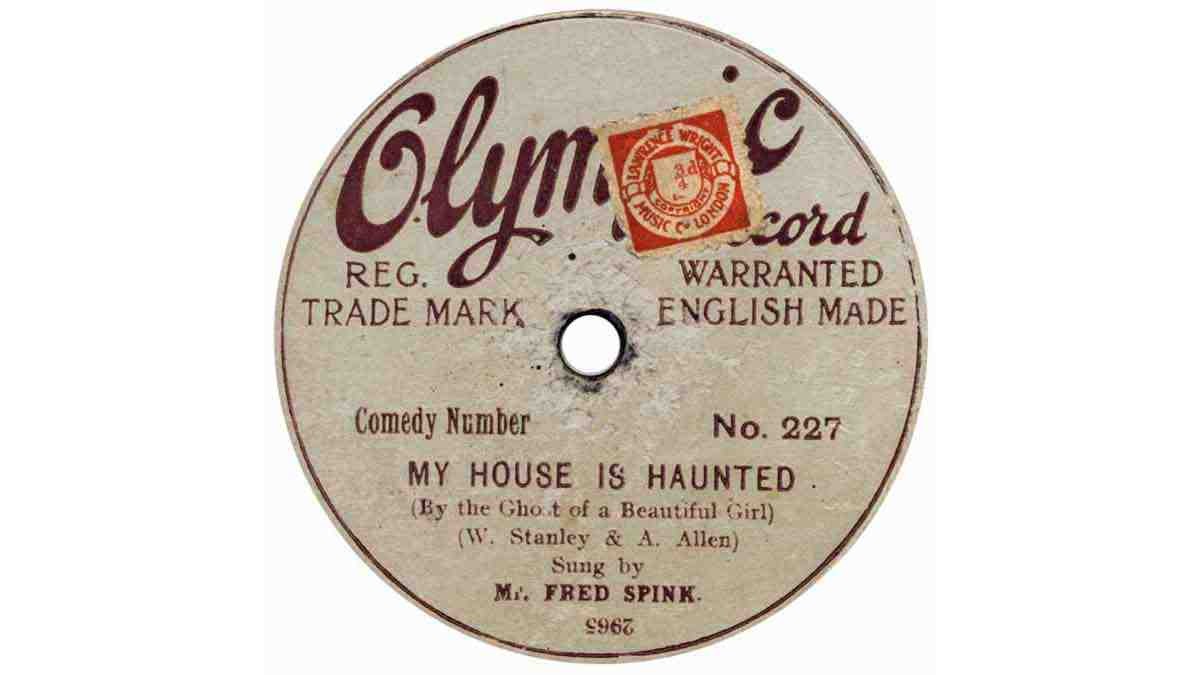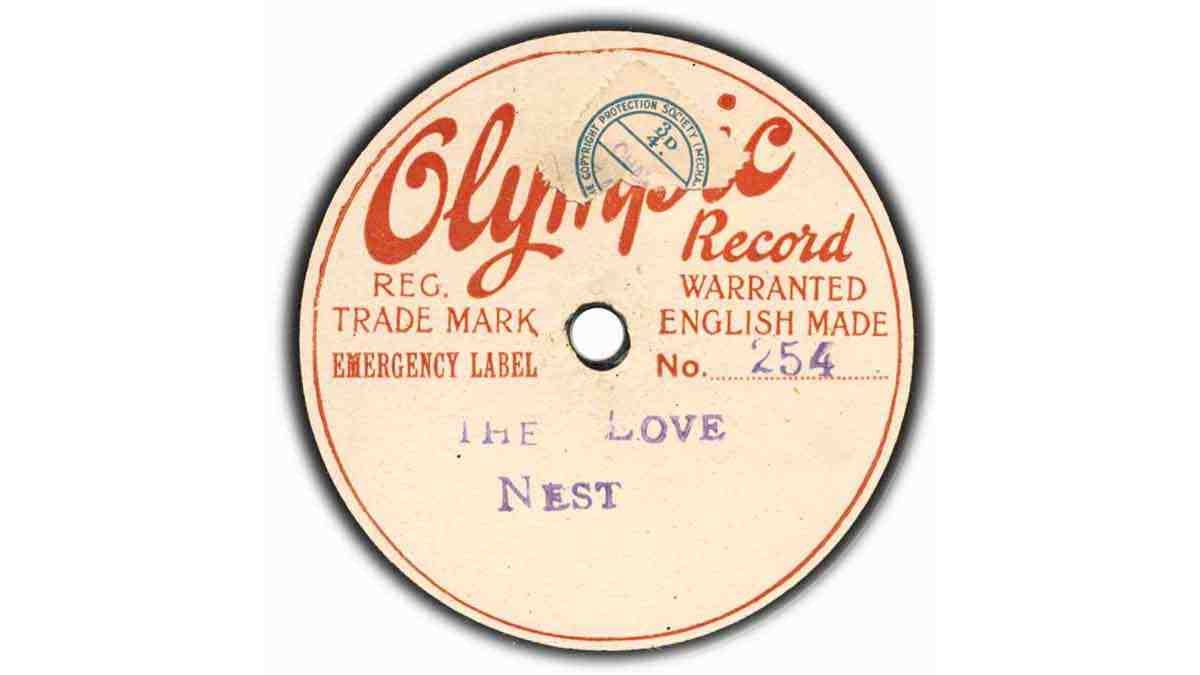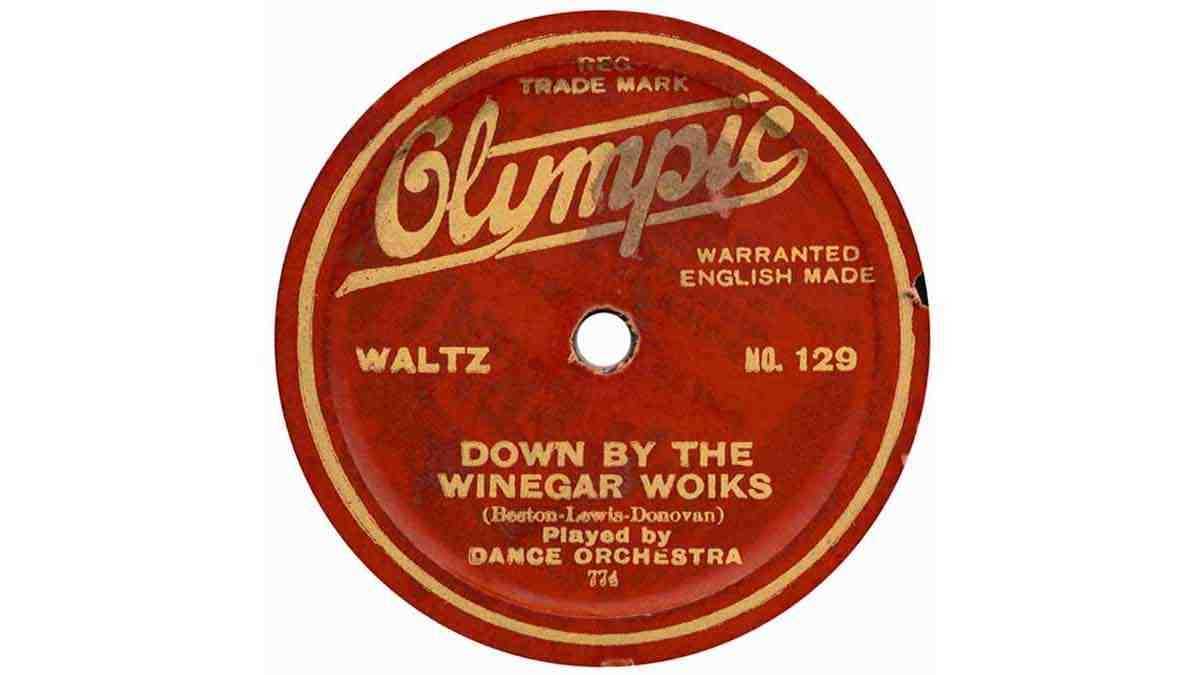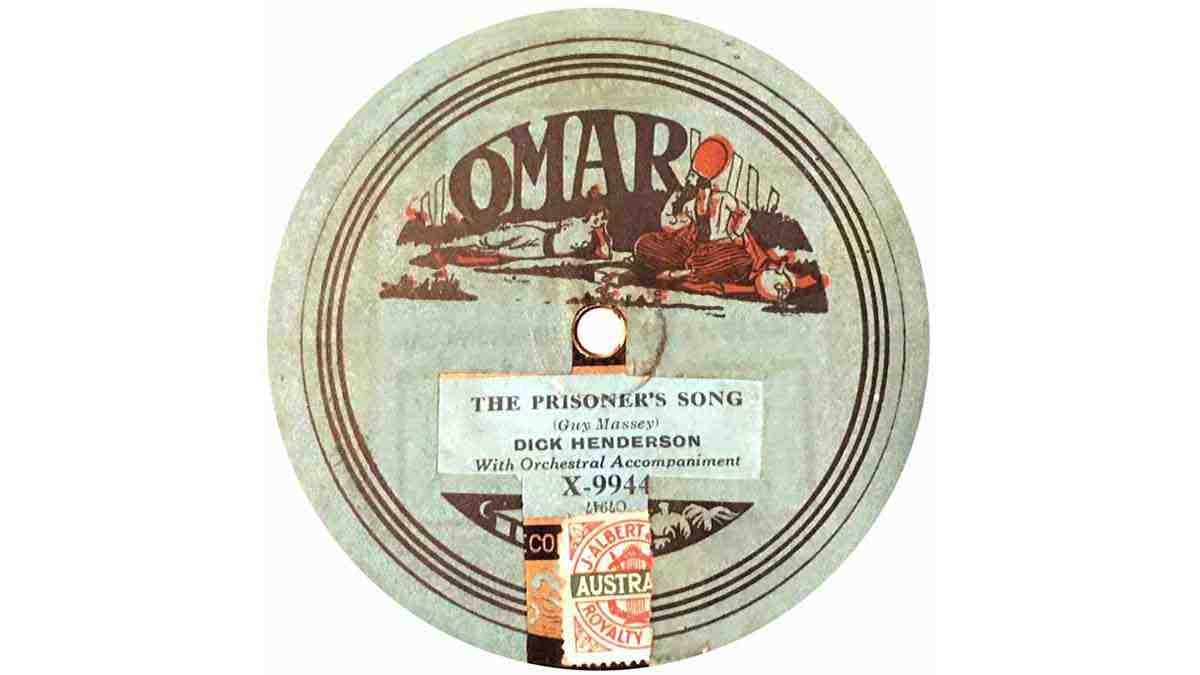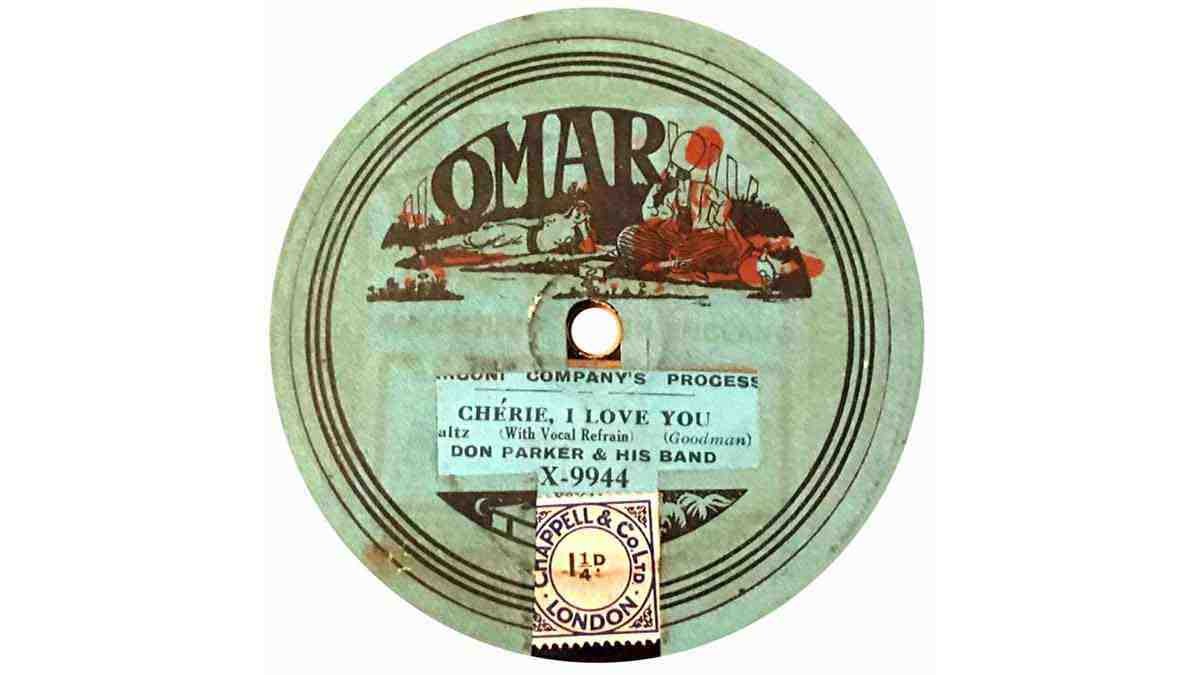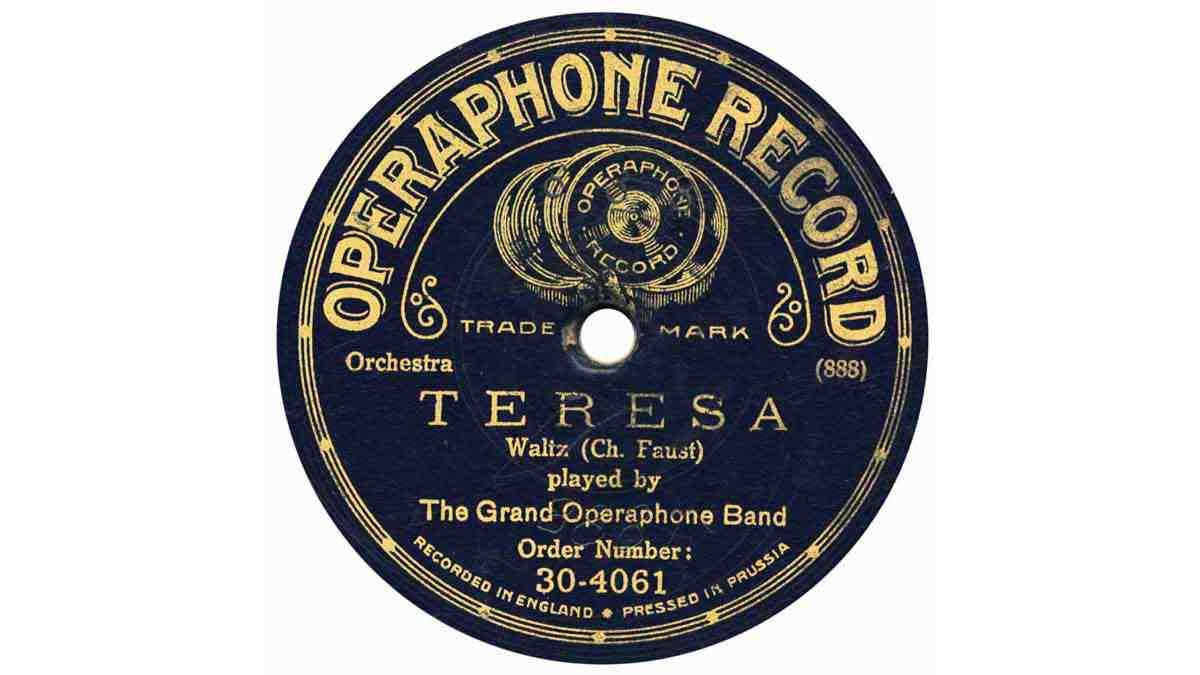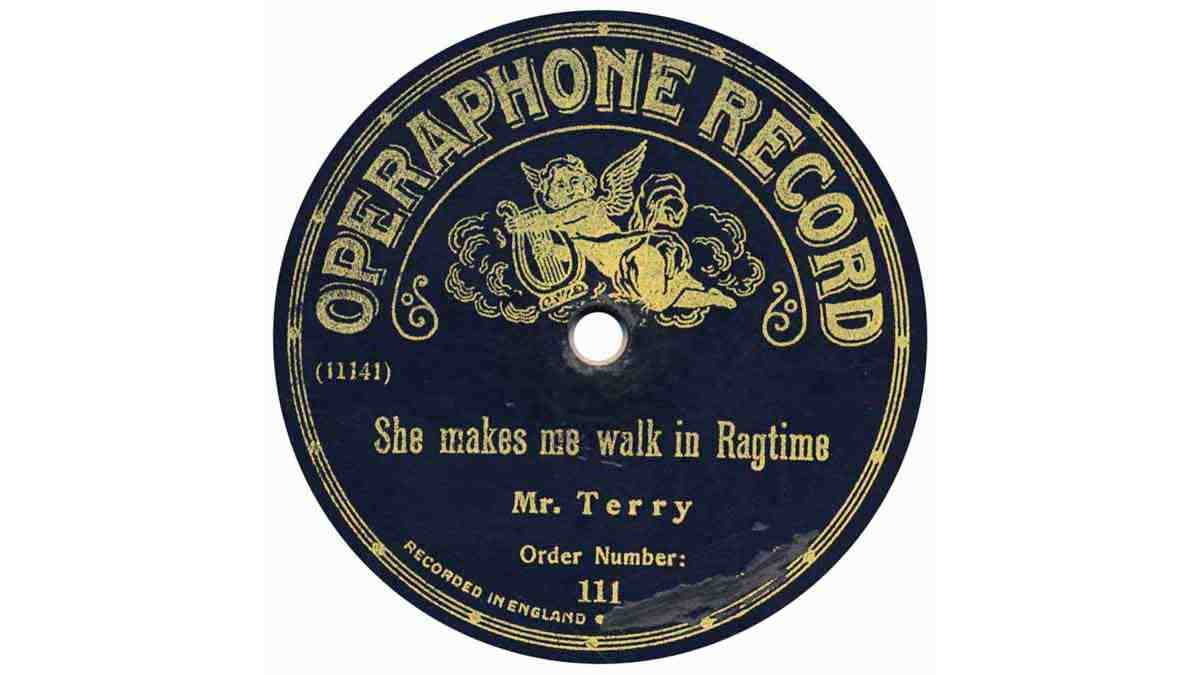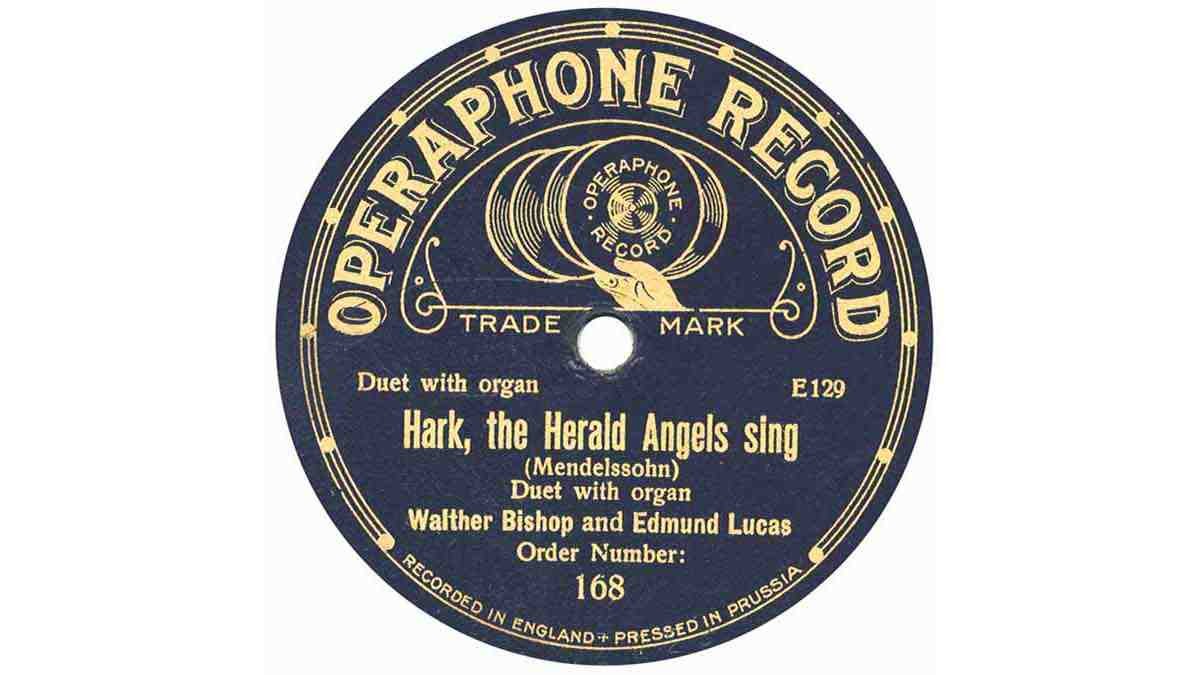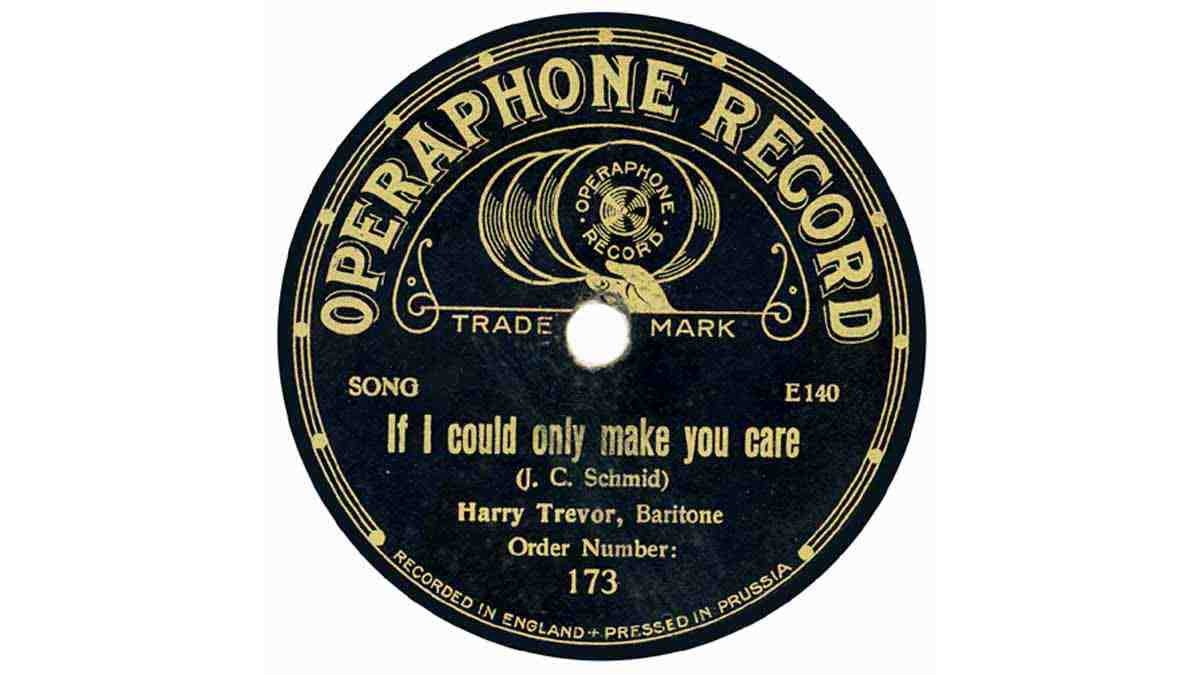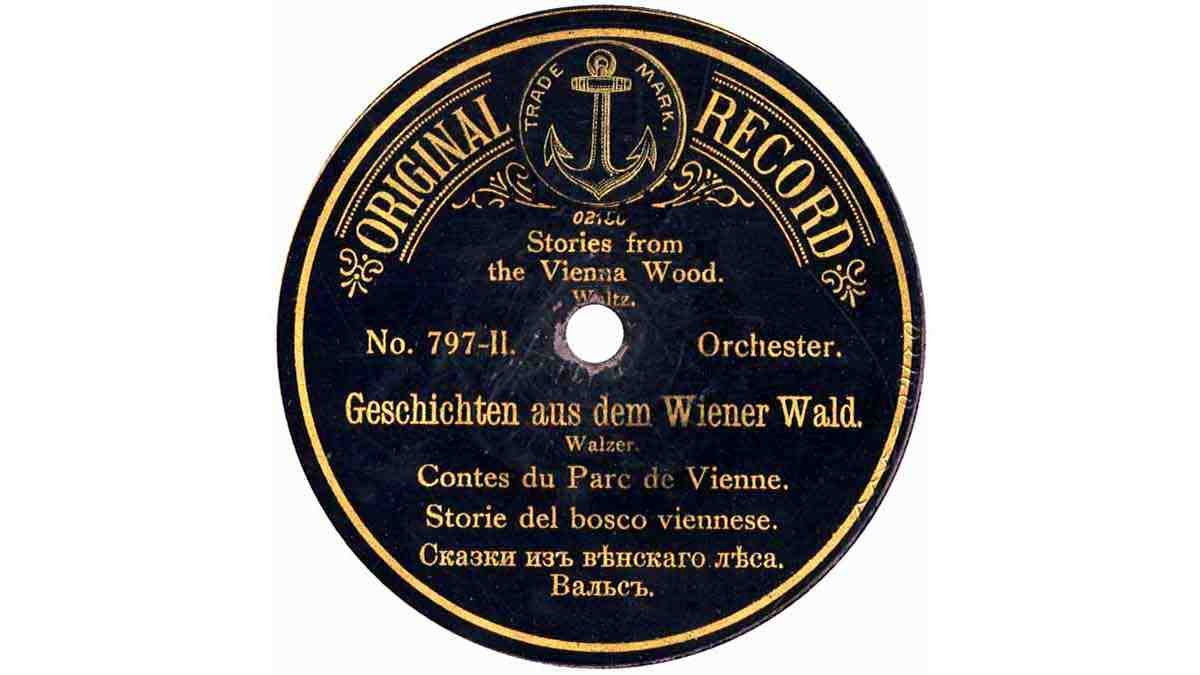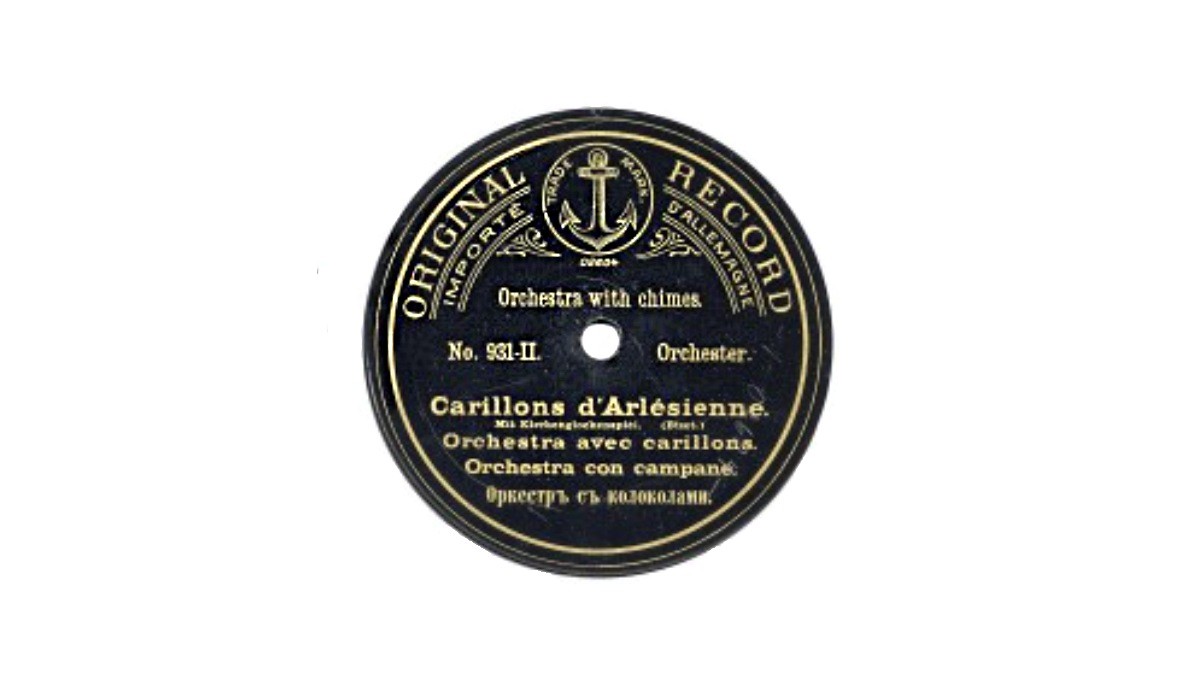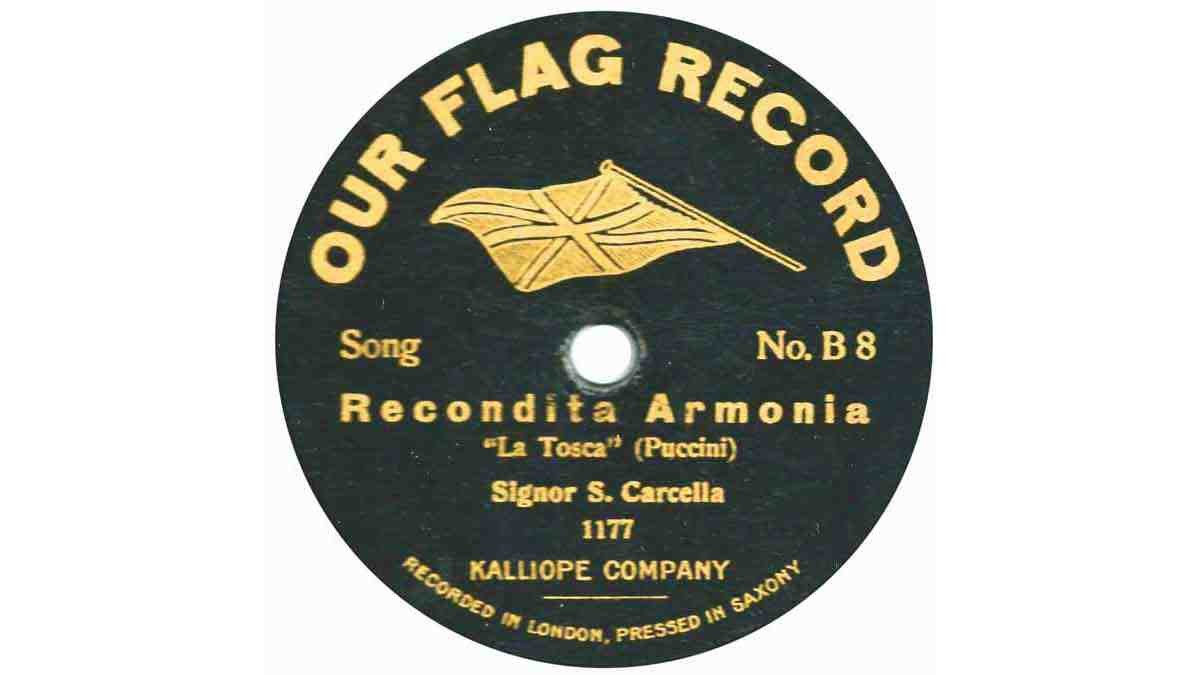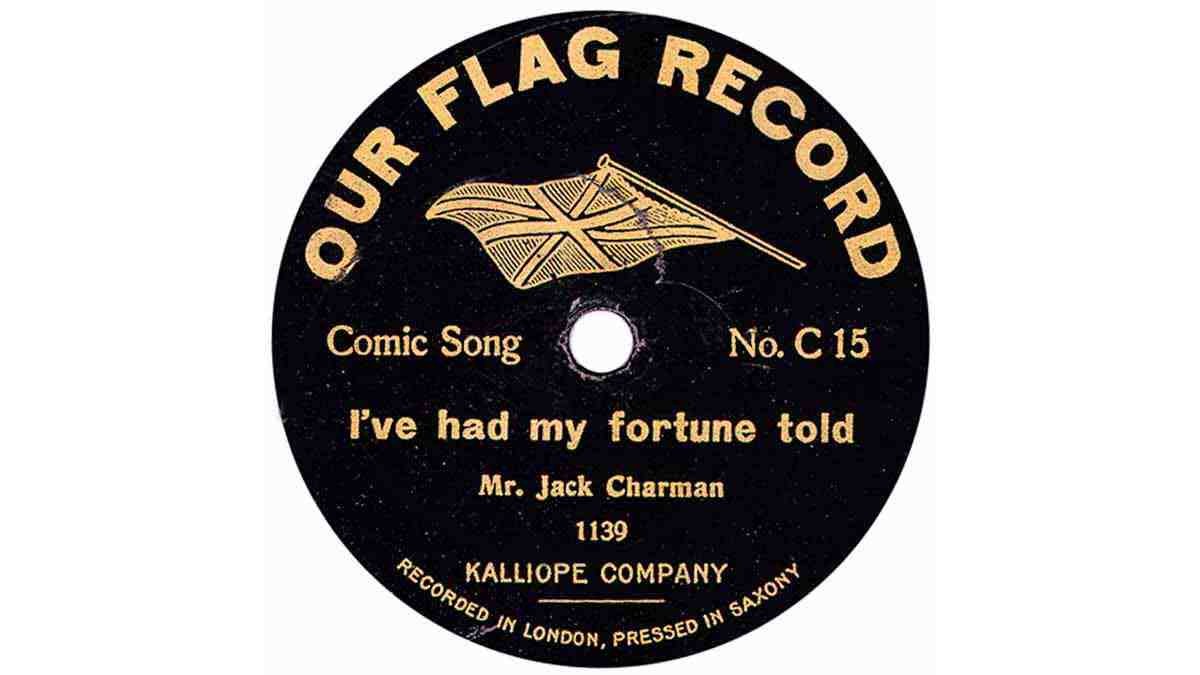
Early British record labels 1898-1926: O
Odeon, also Baby Odeon | Ogden Smith's Top Note | OKeh | Oliver | Olympic | Omah | Omar | Opera Disc Company | Operaphone | Original Record | Our Flag
Odeon, also Baby Odeon
A monumental and exhaustive listing of British Odeon records, compiled over many years by Mike Langridge is available. “British Odeons” [1904-1914]; Mike Langridge. City of London Phonograph & Gramophone Society Bookshop, Norfolk, 2006. 310 pp A4 format. See the bookshop at clpgs.org.uk for details of how to obtain this excellent work.
The origins of the enormously important Odeon label reach back almost to the dawn of disc records, and simply cannot be abstracted. A detailed company history by Frank Andrews occupies 11 A4 pages at the beginning of Mike Langridge’s book. Suffice it to say they first appeared on the UK in 1904, and were very, very prolific. It was a ‘serious’ label in that it issued high-class operatic vocal (and orchestral) material from recordings it had made in many countries, as well as more popular fare. For instance, H.M. Grenadier Guards Band made about one hundred and twenty double sided Odeon discs roughly between 1907 and 1914; and they were but one of many military bands that recorded for Odeon. Their recordings were usually excellent: deep & sonorous. See also Jumbo & Fonitipia.
Ogden Smith's Top Note
See Frank Andrews, FTR 27, 2008. Frank tells us that this ‘label’ was confined to one retailer: Ogden Smith, of 21 Cheapside, London – though they had other branches too. The firm existed from 1910 to 1915. The discs were created by applying a crescent-shaped sticker to the top of existing records. The label is known stuck onto Polyphon Records, as here. Quantities of these were jobbed off in 1912, so it is most likely that the ‘Top Note’ discs appeared then, and were offered perhaps up to the outbreak of war. The foot of the Polyphon label said ‘Made in Germany’ or, as in the example above, ‘Pressed at Wahren – Leipzig’. Few, if any, would have bought such discs after August 1914.
OKeh
See Frank Andrews, FTR 27, 2008. OKeh is of course a quintessential U.S. label, and Frank gives a concise account of its origins. All we need note here, is that the earliest OKeH records were vertical cut and were shown at the National Music Show in New York, summer 1918. With the expiry (or collapse) of the Victor/Columbia patents on lateral cut discs, OKehs of that type soon appeared. The British Connection is simply that by July 1919, one Alfred J Balcombe was the Sole Agent in the U.K. for these discs and other products. Balcombe had been a director of The Phono Exchange Ltd. in Cardiff, Wales, and it was through this perhaps rather unexpected retail outlet that ‘Indian Head’ OKehs were sold. So they do qualify as a British Label – but are almost impossible to find! Both the old vertical cut and the new lateral cut were offered. More recently, we acquired OKeh 4025, which is important in that it bears a British copyright stamp, which definitely attests to its sale in this country.
Oliver
See Frank Andrews, FTR 27, 2008. Frank writes quite extensively about these ‘micro-discs’, which came in three different sizes, happily, not all at the same time! The scarcest (and probably latest) size is 7″ (17,75cm). They were a product of Crystalate, and were apparently generally available to any dealer. (Quite a few mini- and micro-discs were specific to certain retail chains.) Indeed, the elusive 7″ Oliver was pressed from the same masters as used by Crystalate for Woolworth’s Victory discs. (There is no entry on this site for Victory, as they were all electrically recorded; but it would be churlish of us not to illustrate a 7″ Oliver, if one turns up. And indeed, here is one, kindly sent in, August 2020, by Roger Mackey!) They seem to have started in 1926, and were available up to 1930. Besides the numbered series, there are small sets of childrens’ repertoire in all three sizes, bearing letters rather than catalogue numbers.
Olympic
See Frank Andrews: FTR 27, 2008. Olympic was first produced by the Sound Recording Company for Jacob Levy’s Phono & Cycle Stores of Whitechapel, London with a J.A. prefix, the significance of which, if any, is unknown. It appeared probably in the 1913-14 season, and ceased during the Great War 1914-1918. The SRC’s 10.25″ Grammavox masters were used, and the discs pressed by Crystalate. After the war, in August 1919, Levy’s started the label again, this time wholesaling (factoring) it to dealers. These new red (& eventually grey-blue) Olympics started again at 100, but without the J.A.- prefix. They were cloned from Popular which were made from masters recorded by the SRC (who had long been making normal 10″ discs) and pressed, once again, by Crystalate. Note the primitive, rubber-stamped label of 152. Crystalate seem to have been plagued by paper shortages around 1919. This form of Olympic seems to have survived as long as did Popular: 1923, though sales must have been modest as they are not common. Red Olympics are known with over-stuck Butterfly labels. Following changes in the companies involved, Imperial Records appeared in late 1922. Imperial might be regarded as a replacement label for Popular. Accordingly, Olympic appeared in a new form, derived from Imperial, its catalogue numbers seemingly stepping back to 100 once again. The example above is (quite obviously) merely pasted over an Imperial label. Whether all such late Olympics are the same, we do not know. Olympic persisted until at least 1926, for electrical recordings have been reported on the label.
Omah
See E78PB, p 160-1. These ACO discs were overstuck with a rectangular OMAH label, and sold in Australia. They presumably represent unwanted acoustic stock being jobbed off by the Aeolian Company. G-15134 was first issued in March 1923.
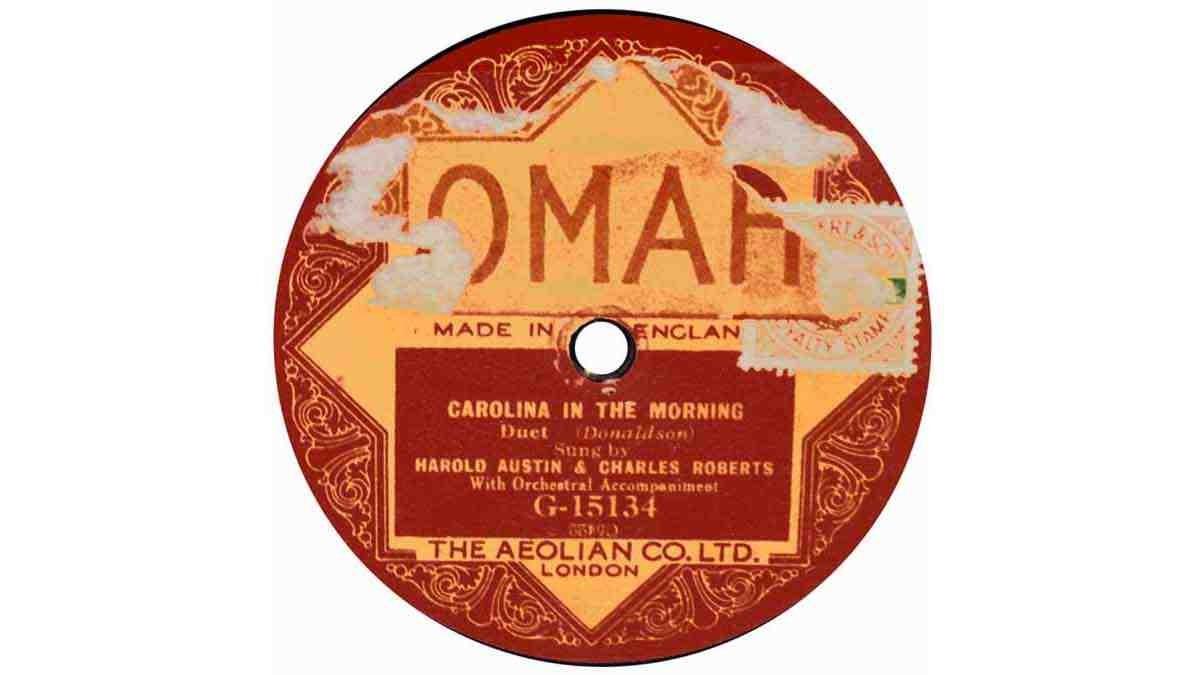
Omar
See E78PB, p.160-1. The Australian collector Chris Singer has kindly sent scans of both sides of this very scarce disc. Like Omah (above), these discs were British Vocalions with over-stuck labels. It has sometimes been said that they were obsolete U.K. stock, jobbed off to Australia. Yet the Vocalion company did have a branch in Australia; and one side of the disc has an Australian Copyright stamp. Therefore, it is more likely that these discs were sold off, locally, by the Australian branch. Almost as interesting, is that one side of this disc is mechanically recorded – C7947 – while the other bears the partially-visible legend ‘Marconi Company’s Process’, which is the more modern electrical recording system. Such hybrids are very unusual. There were apparently 12″ (30cm) issues on Omar too.
Opera Disc Company
This U.S.so-called ‘pirate’ label appears here on the grounds that it bears a British recording with a curious history. Made by the celebrated bass Feodor Chaliapine, it was recorded in London on 5th July 1913 for the Gramophone Co., and duly issued, doubtless on a variety of their labels. However, during the 1914-1918 war, the German branch of the Gramophone Company was seized by the German government (just as the German Lindström Co. was taken over in this country in 1916, both being ‘enemy’ concerns). After the war, the British company tried to regain its former subsidiary. But it had already been sold, lock, stock & barrel to Polyphon, and for some reason this sale could not be undone. Therefore, there was the paradox, exceedingly bitter to the Gramophone Co., that duplicates of many of its best masters were held, apparently unassailably, by a totally foreign company. Some of the high-class ones were offered on the international market by Polyphon, and in New York, the Opera Disc Company took them up. Pressed in Germany & shipped to the U.S., they appeared in 1921 and continued until 1923, when legislation by the Victor concern (a close affiliate of the Gramophone Co.) drove them out of business.
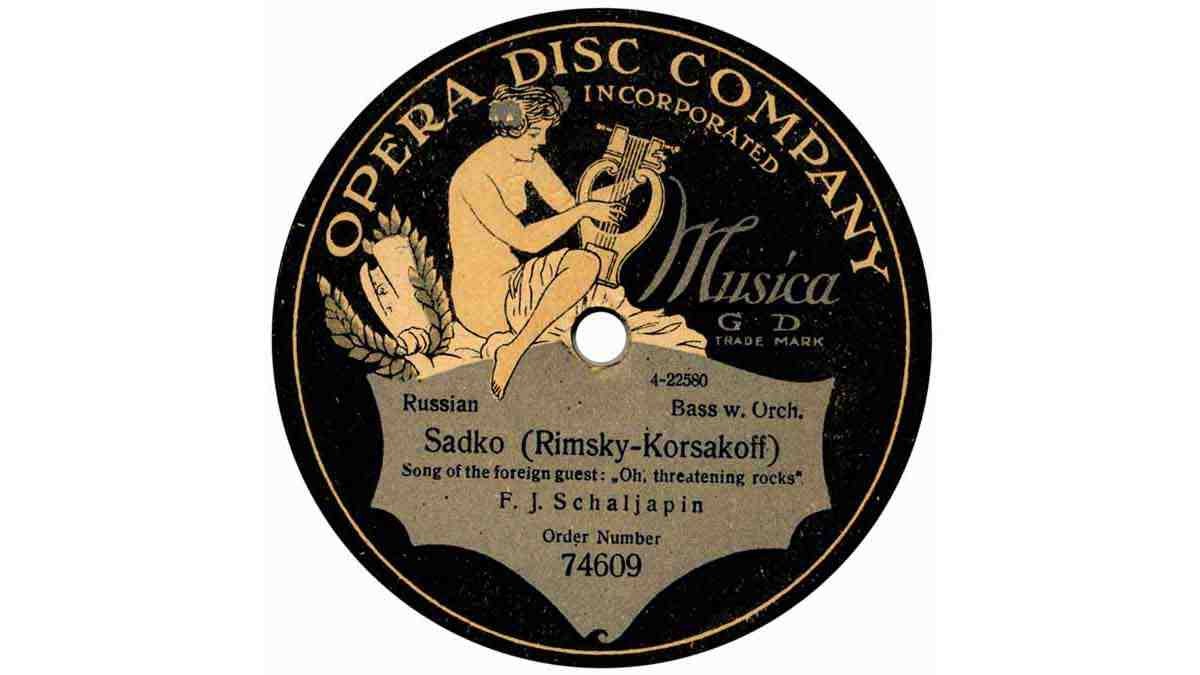
Operaphone
See Frank Andrews: FTR 27, 2008. This is a rare label, of which Frank has written a detailed account. The records were put out by the Operaphone Record Co, Ltd. in summer 1913 and 179 had been issued by November/December. 12″ discs also appeared. They were pressed in Germany; Frank believes at the Turmalin Works, plus another unknown factory. The former used masters from a variety of sources that had come into their possession. There were two label designs. The first had a cherub with a stringed instrument, whereas the second has a hand holding five discs. Frank suggests that The Gramophone Co. sued the Operaphone concern for infringing one of it registered trade-marks – doubtless the famous ‘recording angel’. Apparently a case of ‘Cherubs ‘Я’ us’! Hence the new design. The label disappeared on, or soon after, the outbreak of the Great War in August 1914. So Operaphones were probably around for under a year. Few can have been sold, as they seldom turn up. Note that ‘Pressed In Prussia’ has been gouged out on 111 above.
Original Record
Dr. Rainer Lotz recently kindly sent these two examples of multi-lingual titling. We include all multi-lingual discs, on the grounds that they might have appeared in the U.K. – or perhaps in an Anglophone part of the British Empire. Anker was an important German label both before and after the Great War. These discs would probably date between 1908 and 1914. This type of record usually carries two, three or four languages; five, as here, is exceptional.
Our Flag
See Frank Andrews, FTR 28. Not to be confused with ‘The Flag Record’. ‘Our Flag’ discs were announced in February 1913, by the new London agent, Philip Waldman. They were made by Kalliope Musikwerke A.G. of Dresden, who had formerly made Stella and Victory discs for Blum & Co. The masters to be employed had actually been the property of Blum, but he had lost possession of them due to a dispute. However, the launch of ‘Our Flag’ records was not successful, as they are exceptionally scarce. This would partly be due to their short life span, probably just a few months – and certainly not after August 1914.
